Smart #5 Brabus Review: Stupidly Quick For A Smart
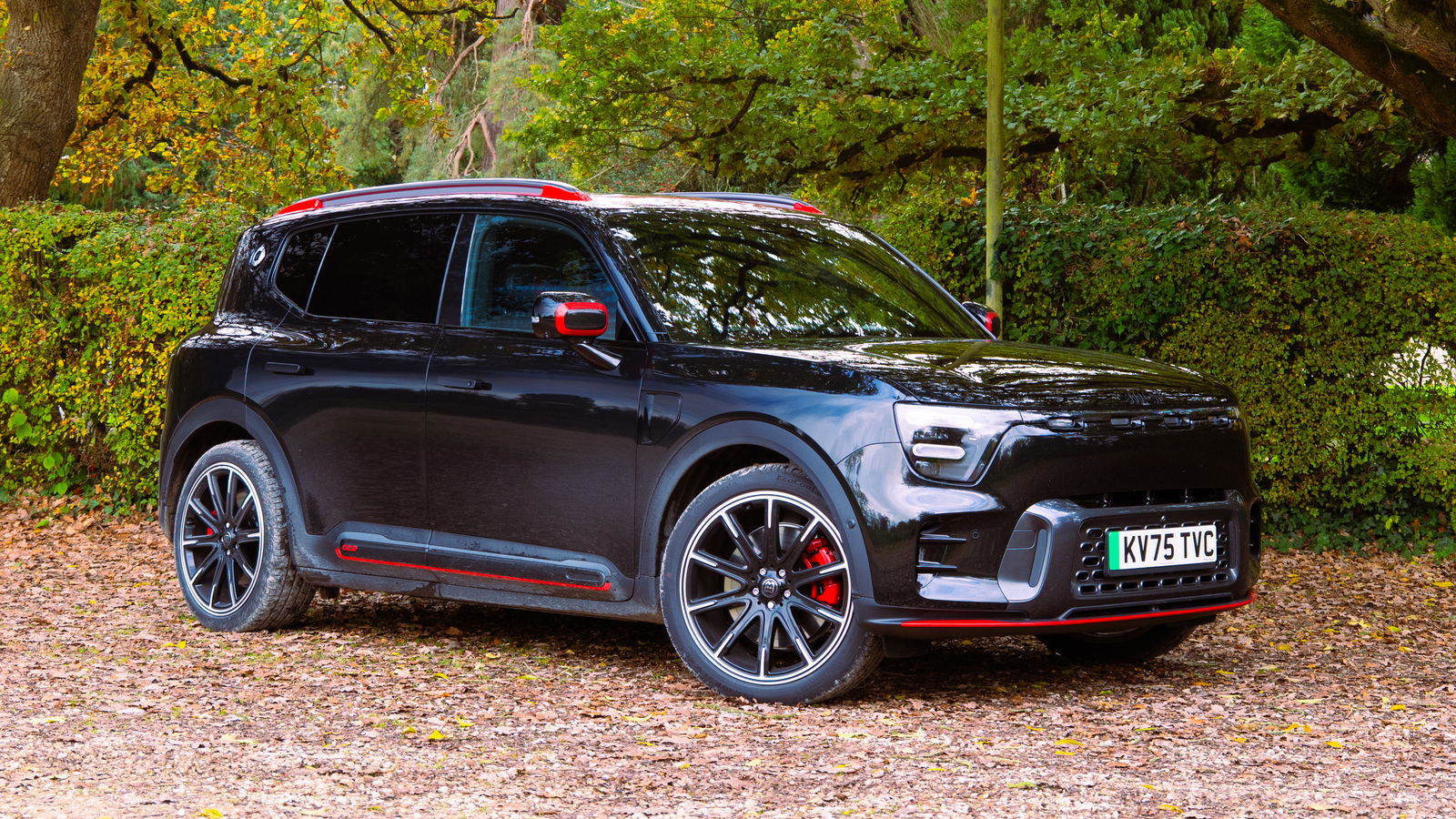
Pros
- Solid roadholding and handlingSpacious and comfortable interior
Cons
- Ludicrously overpoweredOverreliant on touchscreen-based controls
Never before has Smart strayed so far from its original identity of producing some of the smallest and surprisingly fun economy cars out there. The first of this new generation of Smarts, the #1, already weighed twice as much as its ForTwo forebear. The #5 is continuing the trend, this time weighing in at 3.4 Smart ForTwos (2453kg).
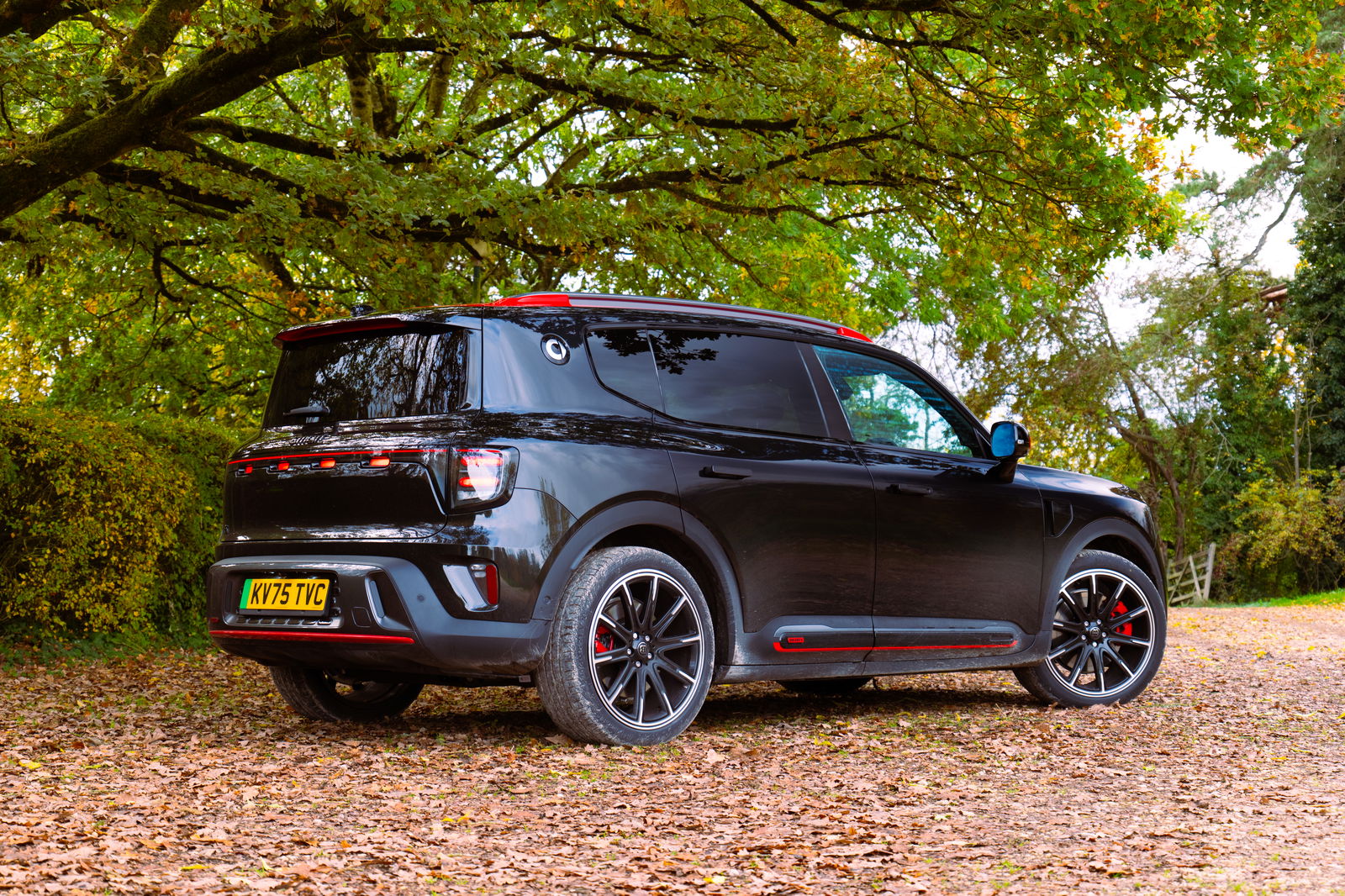
Most obviously from the outside, is the more traditional, boxy SUV shape. It’s an overall handsome design, not fussy or overly showy. The design language established by the #1 and #3 before it carries through clearly with smooth lines, and the prevailing pill-shaped motif across openings and interior elements in those cars has been extended to exterior lighting on the #5 in the headlights and tail lights.
The distinguishing features of the Brabus edition extend to red accents for the front splitter, roof bars, wing mirrors, sills, and brake callipers. Though, despite the colour change, the latter item is of no greater performance than the lower models. The Brabus also gets larger 21-inch wheels, which, while looking great, may harm ride quality. But more on that later. There’s also surprisingly little exterior Brabus branding on show, with badges on the sills and one black item on the rear being the only indicators that it’s about to leave you for dead at the lights. Besides all the red bits, of course.
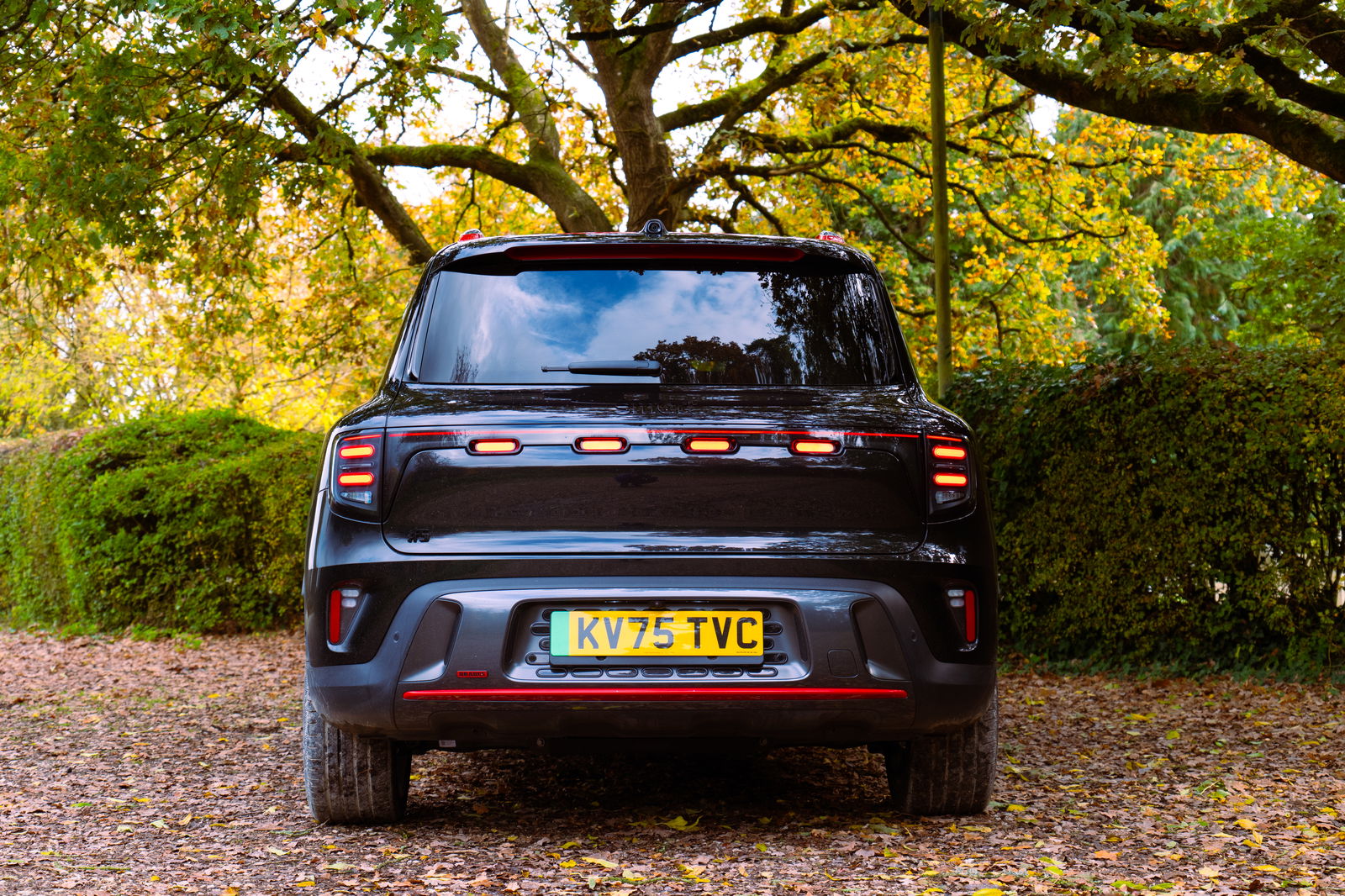
The weight of the #5 is reflected in its exterior proportions, too. At 4.7m long, it’s easily the largest Smart we’ve ever seen as well as the heaviest. Positioning it squarely against some of the current biggest EV sellers out there, such as the Tesla Model Y Performance, Kia EV6 GT and Skoda Enyaq VRS. And, if the spec sheet is anything to go by, it should put up a decent fight against them.
£51,800 gets you 637bhp and a necessary 100kWh battery pack which, providing your right foot is extremely light, will net you a WLTP combined range of 335 miles. The #5 is based on the Geely SEA3 platform which nets it the same benefits as a number of other offerings from the Geely umbrella, including an 800V architecture and future-proof 400kW fast charging capabilities bringing a potential fast charging time from 10-80 per cent in just 18 minutes. Though, the fastest you’ll be able to charge it in the UK is 350kW at the time of writing.
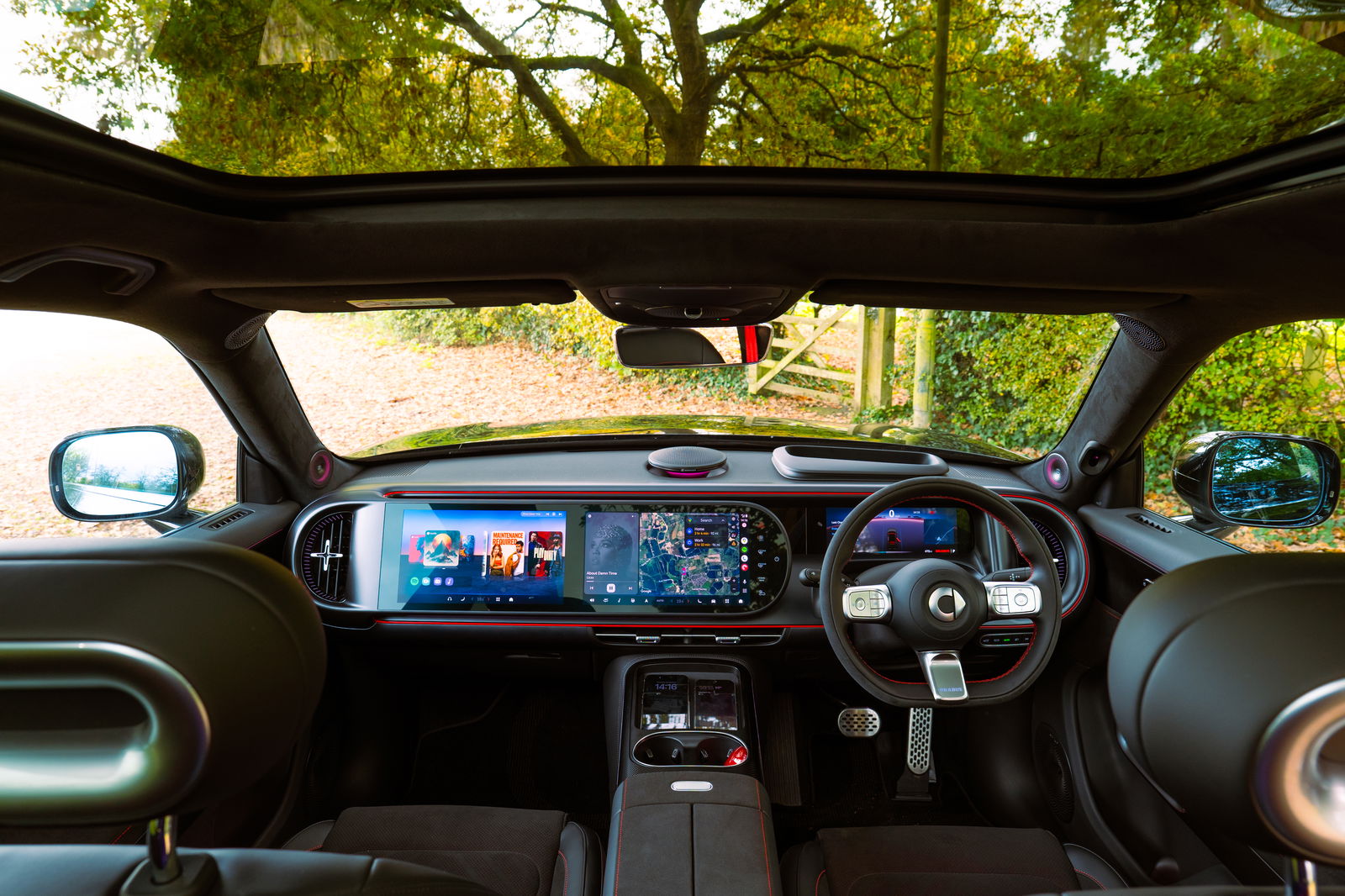
Stepping inside, you’re greeted by a well-thought-out, if a little showy, interior. The dash is dominated by a flight of three sizeable screens. The first is the now ubiquitous driver gauge cluster screen, which displays, besides the fundamental speed and range stats, a graphic of the car itself rolling towards an unreachable cityscape. To the right of center, a useful minimap which can integrate with Android Auto or Apple CarPlay to show the map view from your app of choice.
There’s also the passenger screen, which equals the size of the central infotainment display. The last time we saw a screen of this size and magnitude was in the new Porsche Cayenne. But, where that car uses a new-fangled lenticular filter to physically prevent the driver from seeing what’s on that passenger display at any time, the #5 instead opts to use a suite of driver monitoring sensors positioned in the driver-side A-pillar to sense when the driver looks at the wrong screen and pause whatever content is on display there at the time.
To help further avoid distraction, the passenger has the option to divert the audio from their media to a set of Bluetooth headphones while the driver uses the main sound system undisturbed. The Sennheiser Signature article in the Premium and Brabus trim levels is excellent, by the way.
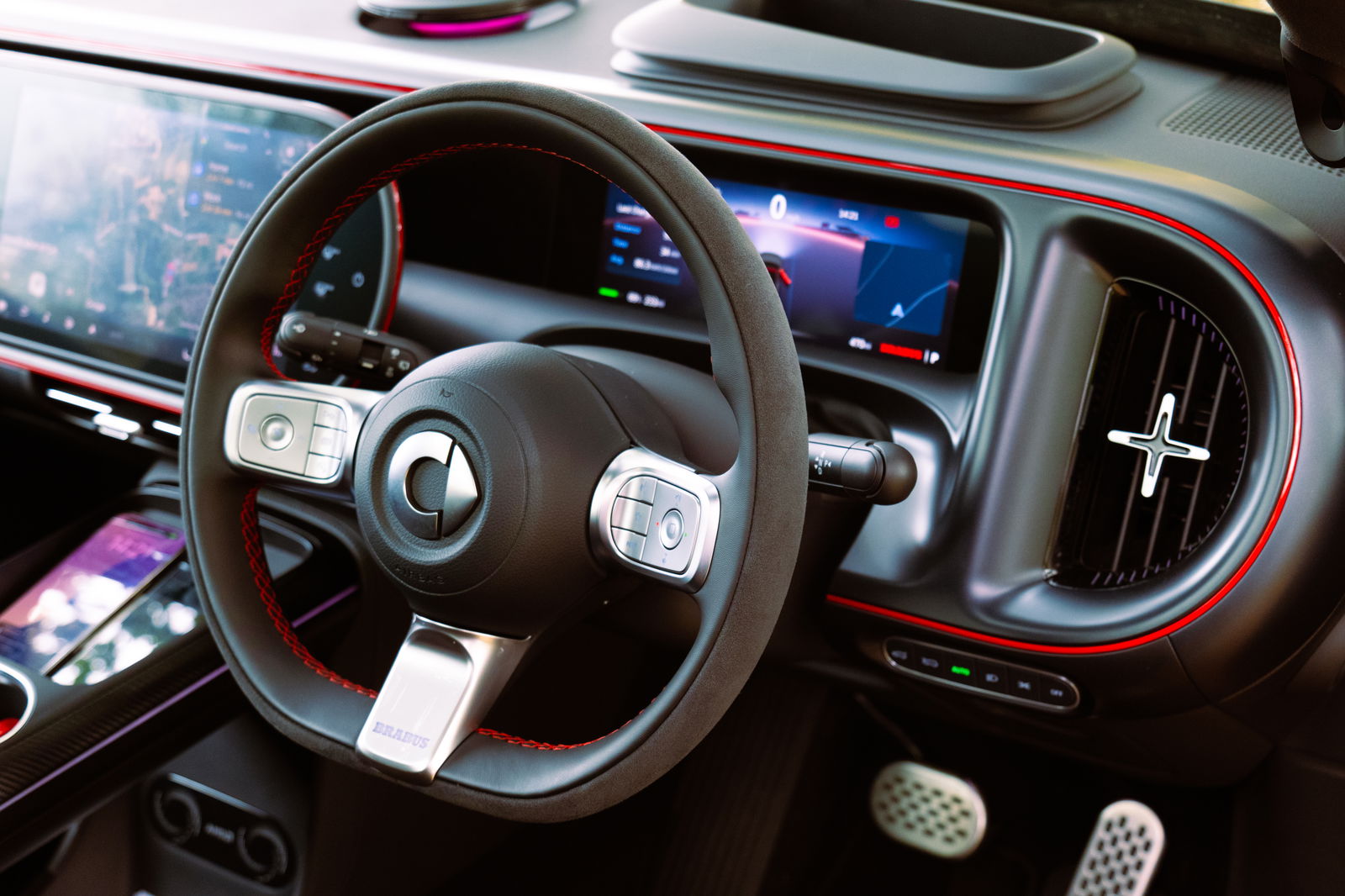
Screens aside, general build quality is strong, with door handles decidedly less creaky than current offerings from Mercedes, particularly standing out. Everything has a reassuring action to it, and exposed plastics feel solid. Both driver and passenger are treated to ventilated seats and ventilated wireless charging pads, the latter of which had some trouble recognising my personal Google Pixel but worked well with my company-issued iPhone.
The red accents from the exterior continue through to inside, with red stitching on the Alcantara steering wheel, red trim surrounding the dash and more red accents on the upholstery and seats, which feature big red Brabus Bs on the headrests. A little silly if you ask me but I’m sure some prospective buyers will enjoy the celebration of their top-trim investment.
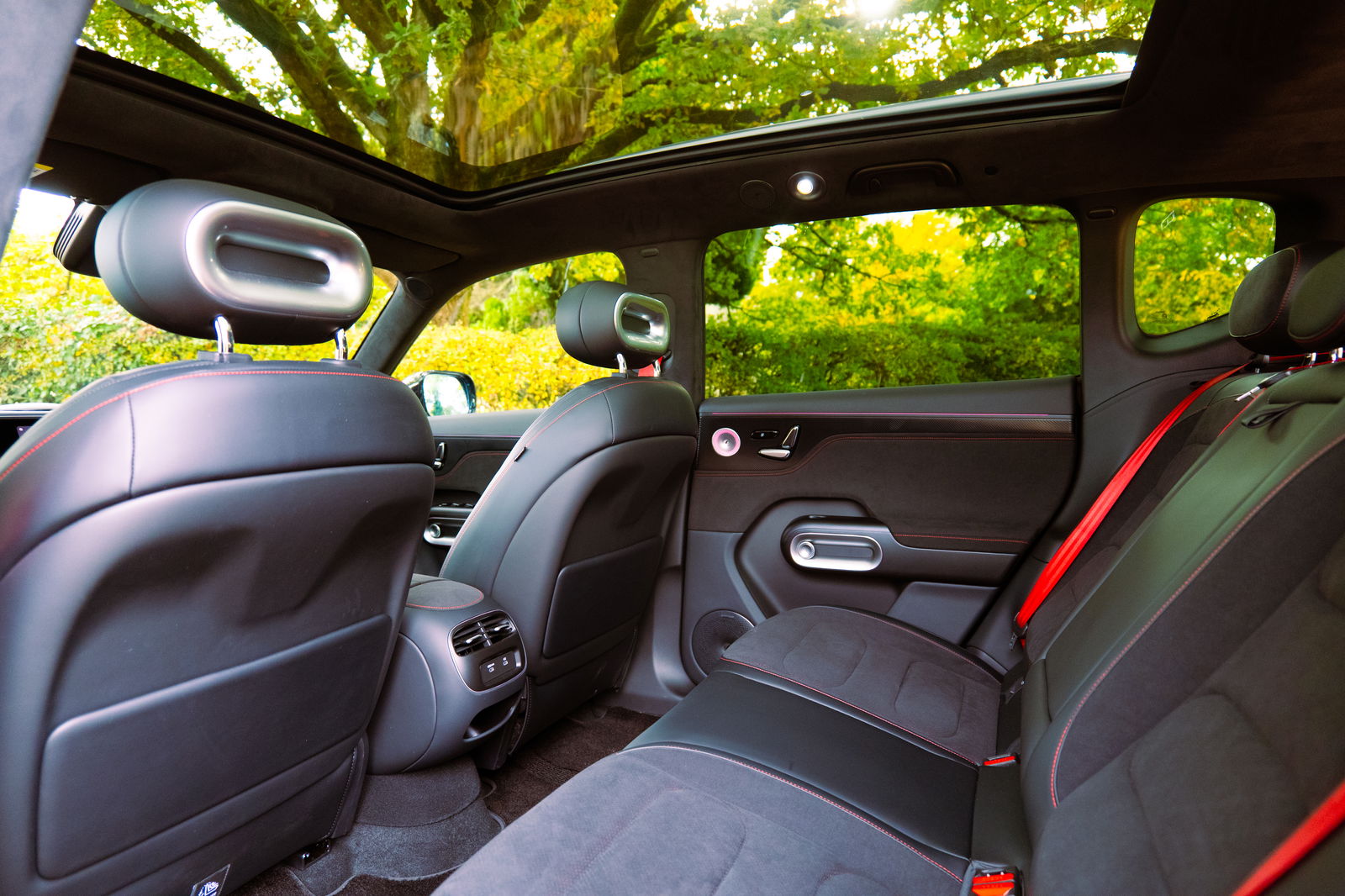
The seating itself is spacious and comfortable too. They’re well bolstered and generally supportive with the welcome carry-over of door-mounted seat controls from Mercedes-Benz present and correct. At 6’3”, I even found there to be enough space in the cabin to sit comfortably behind myself. The rear seats can recline, and the near-side passenger seat also offers the ability to control the seat in front to grant themselves more space. Welcome additions for #5 Uber drivers and chauffeurs, but less so for those with mischievous children.
Owing to the boxy exterior shape, the boot space is very generous at 630L and expands to 1,530L with the rear seats folded flat. It’s complemented by a small but not useless 75L front storage compartment. A rather lewd quirk of opening that rear hatch is that in order to do so, you’ve got to stick your finger in the ‘a’ hole of the Smart logo. Nice touch.
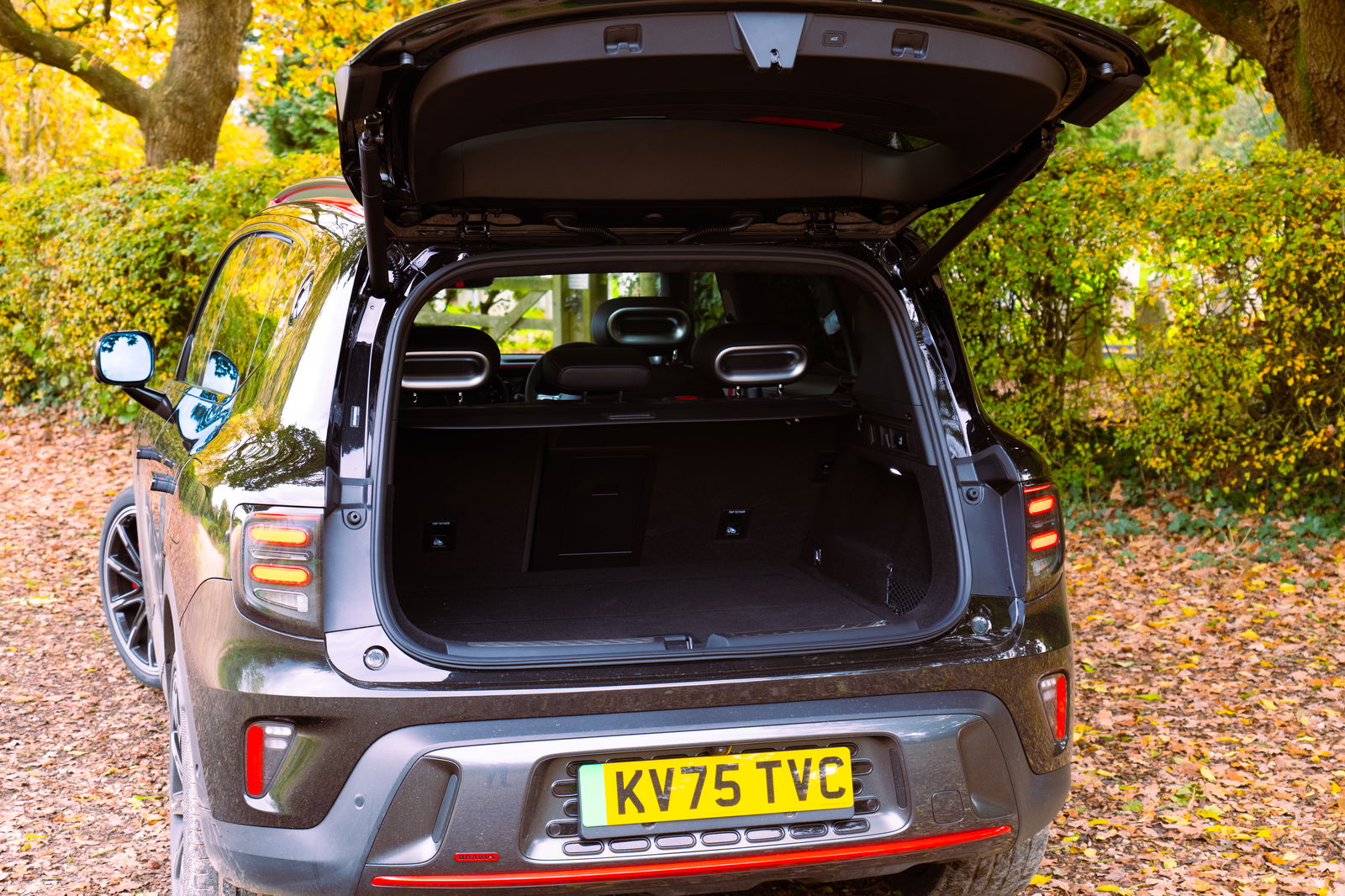
Out on the road is where the Brabus is meant to distinguish itself from the trims below it, and off the line, it does just that. Courtesy of its dual-motor all-wheel drive and frankly silly 637bhp, the Brabus sprints to 62mph in 3.8 seconds. It’s impressive the first few times it does so, but you soon realise that under hard acceleration, it pitches so heavily that you spend all 3.8 seconds looking at the sky. A bit like the Land Rover Defender 90 V8, but without the charming rumble.
Beyond that, though, things do start to fall apart just a little. All of the controls are baked into the aforementioned screens, which, while responsive, are distracting to use. The excellently refined ride and handling of the less dear #5 trims are sadly harmed by the larger wheels and lower profile tyres of the Brabus. The road holding of the Brabus is still solid, though, with well-tuned traction control systems and driver aids which can be turned off in a sub-menu of the drive modes, and from what I could tell, really were off-off.
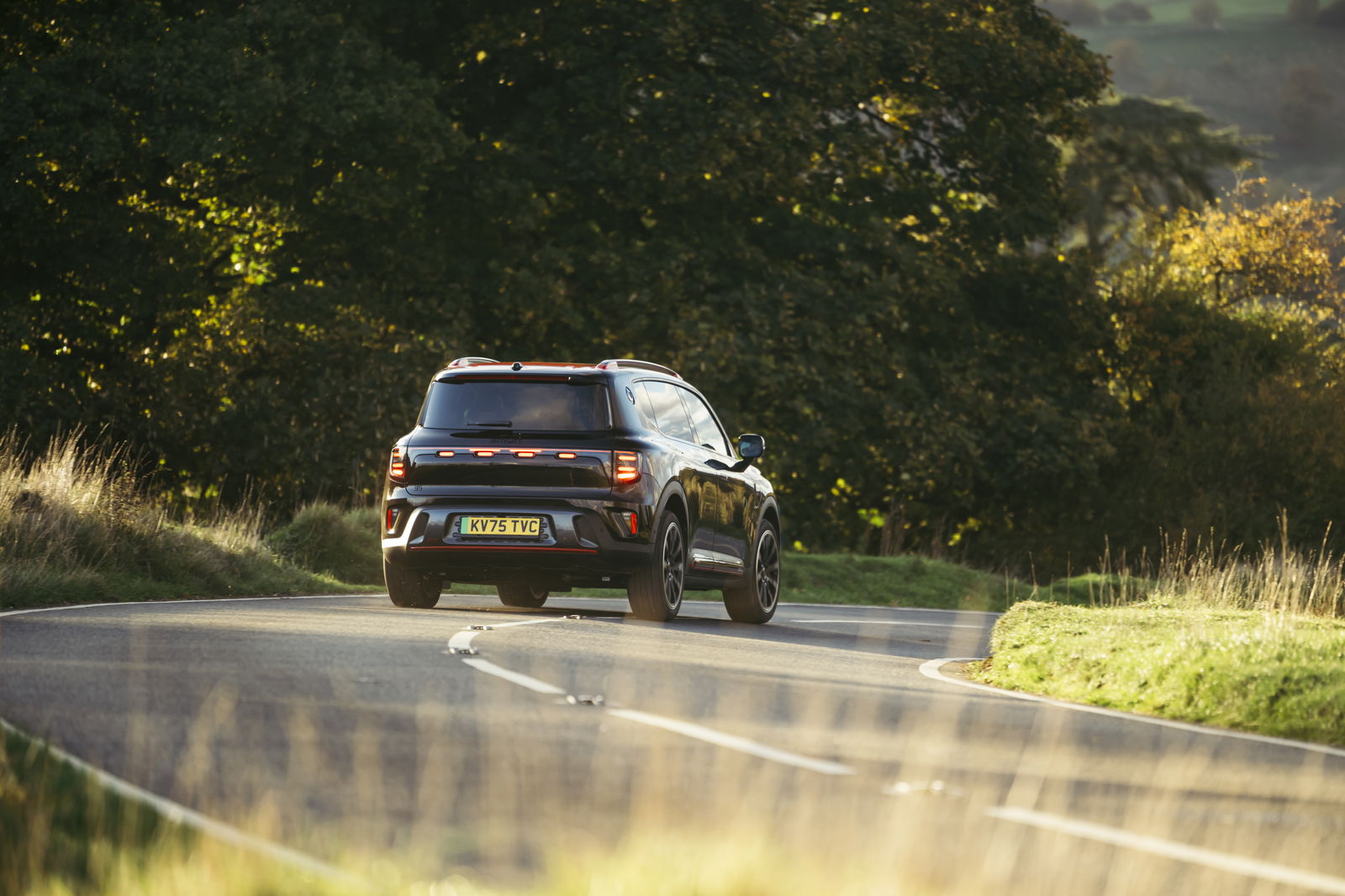
Despite the inevitable lateral roll, body control is strong through corners, and the steering, while not exactly communicative, is predictable and sharp for a car of this segment, albeit a little too heavy in the all-out Brabus mode. It will default to understeer if you push it too hard, but it’s very easy to judge. The braking system is completely unchanged from the other #5 trims, but despite that, it still stops the Brabus handily in a pinch. The transition between regenerative and pad-on-disc braking is very smooth too, all but unnoticeable unless you're actively probing for it.
The easy placement on a tight B-road also extends to less spirited in-town driving too. Despite the obvious size of the #5, the good visibility from the cabin, paired with a solid suite of cameras and sensors, makes the #5 surprisingly easy to manoeuvre and park in tight spaces.
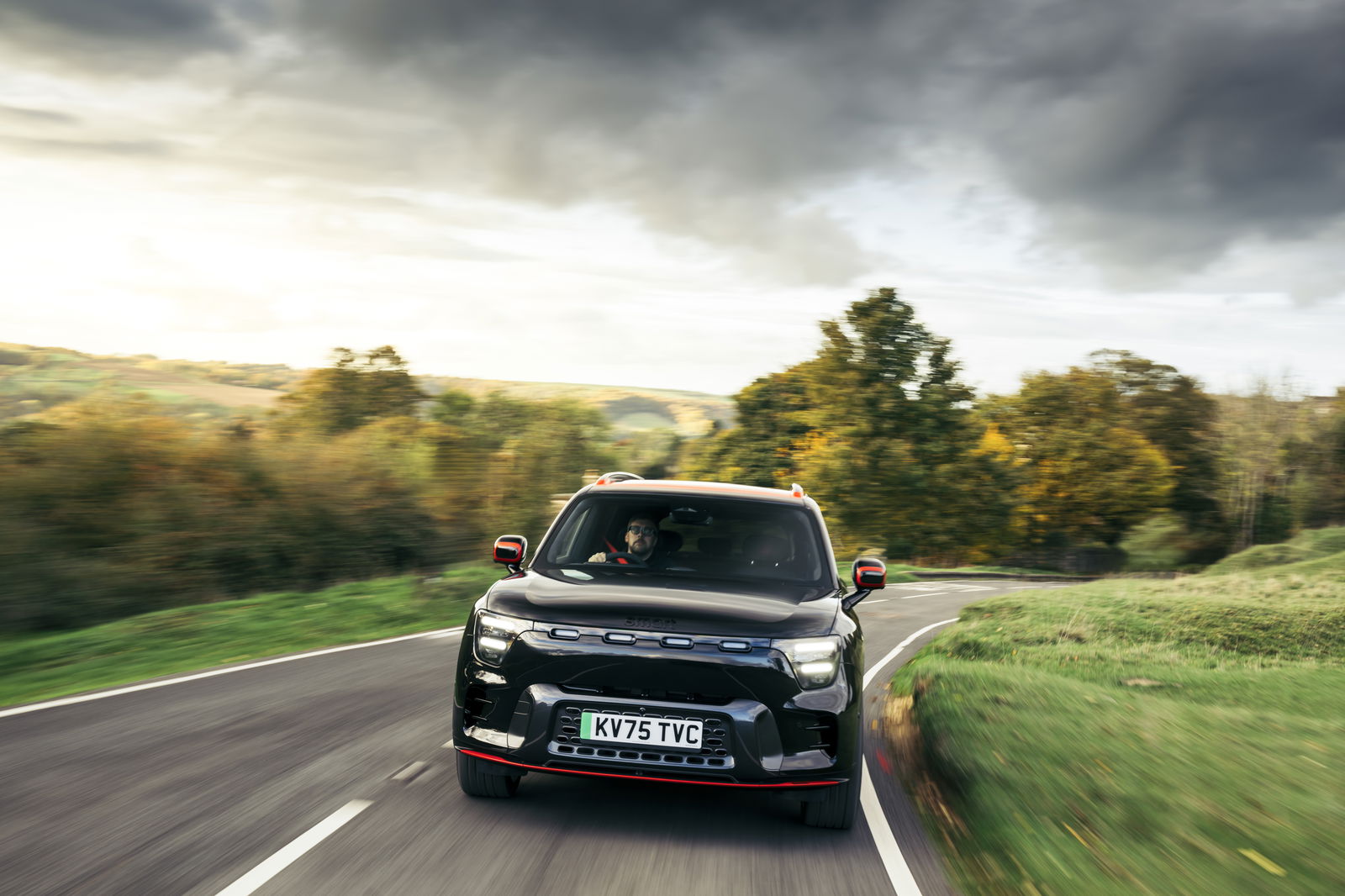
Overall, then, the Smart #5 Brabus is a great value proposition when compared to its rivals. But, when taking a step back and considering the rest of the #5 range, the extra 58bhp over the Pulse trim, which can be had for £4,500 less, simply isn’t justifiable to me. If the Brabus came with some other supporting enhancements, such as retuned suspension, it may not be so unwieldy. Granted, with the Pulse, you lose out on the excellent Sennheiser sound system, but even still, I would personally swing for the identically priced Premium trim. That comes with the sound system and almost all the luxury goodies you get on the Brabus, but with a longer 366-mile range, better ride, and still a healthy 358bhp.
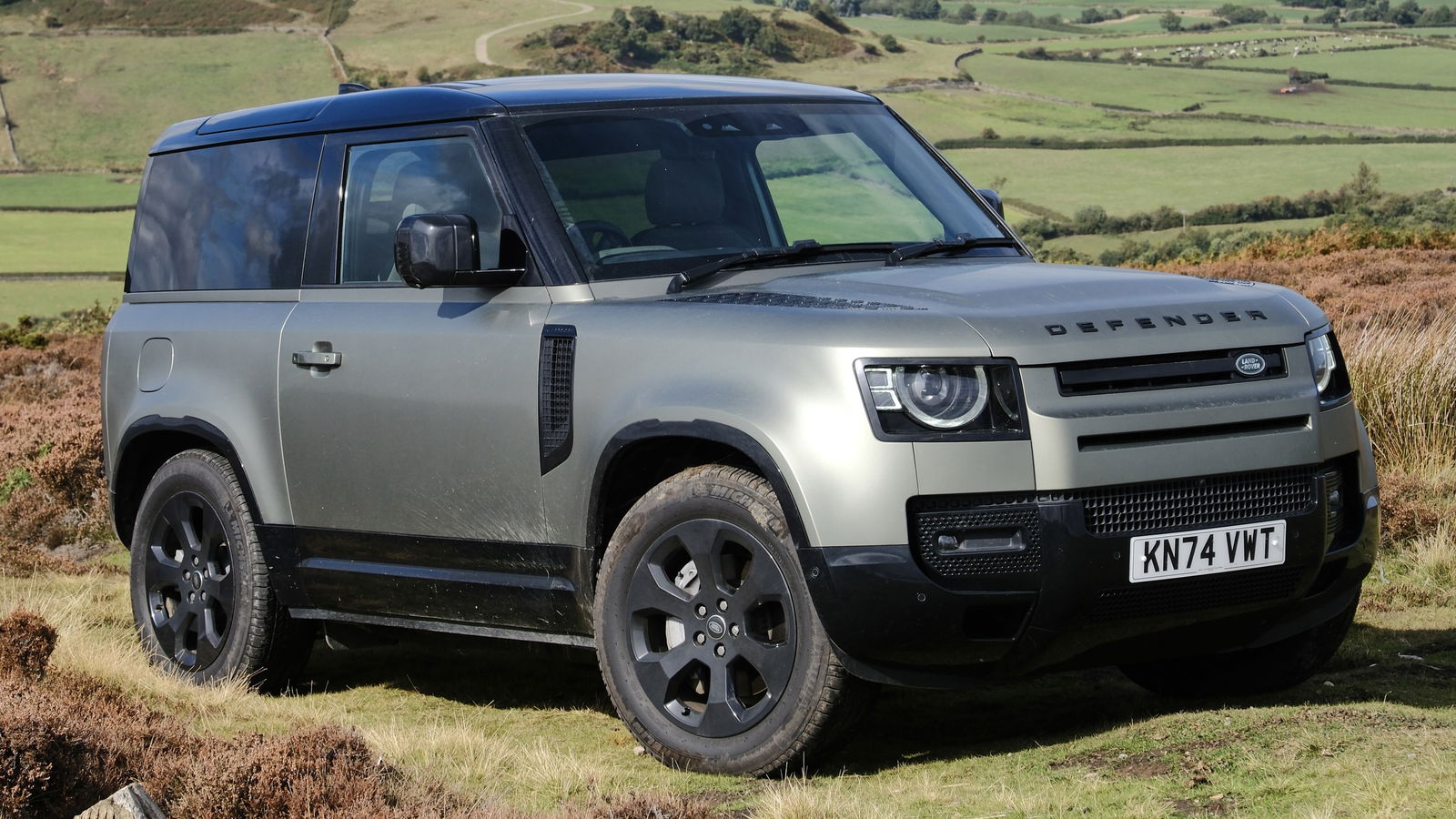

Comments